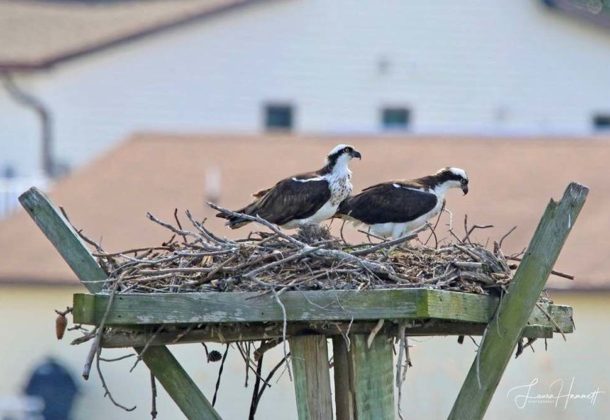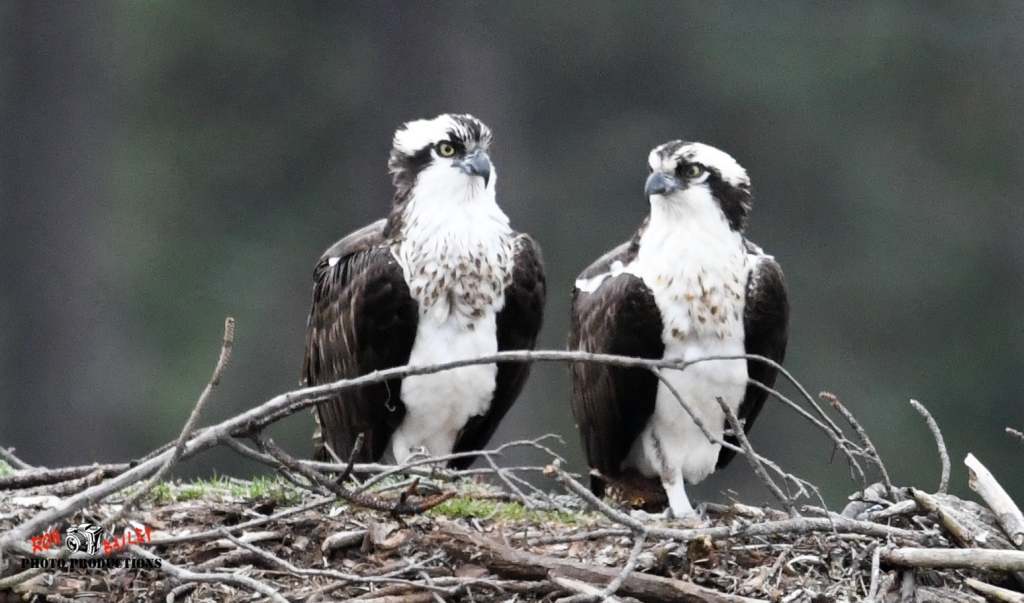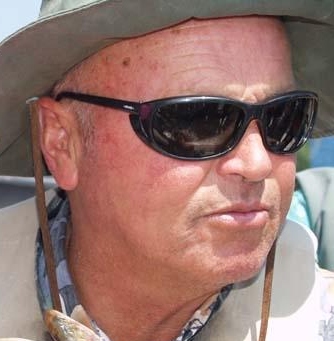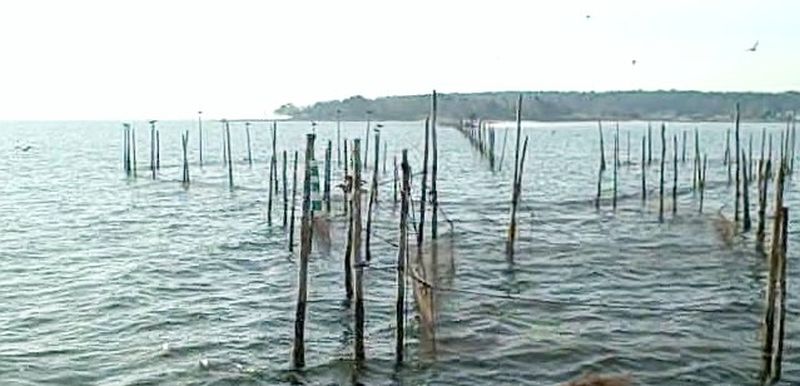Ospreys Return to Where They Were Born: Message From the Cap’n

Photo by Laura Hammett
Message from the Cap’n is a compilation of fishing advice, waterman and weather insights, Chesapeake lore, and ordinary malarkey from the folks who keep their feet wet in the Potomac and St. Mary’s rivers.
From the Interpretive Buoy System the water temperature in the Lower Potomac is moving up above 50 degrees farenheit and the salinity hovering around 14 PSU (practical salinity unit). In other words, it’s an early spring and the ospreys returned a bit early as well.
The Audubon Society notes that the osprey is also known as the fish hawk, also the favored name on St. George Island, which locals consider the “nesting capital of the Chesapeake.” More than 60 nesting pairs were counted in 2019 on St. George Island.
I spied the first fish hawks return to St. George Island on March 8, 2020. Once again they prove the saying, “Ospreys are here by St Patrick’s Day.”
They arrived after flying about 2,300 miles from Venezuela or Columbia, South America, via the 77th parallel, back to the area where they were born. The males usually come first and wait for their mates to arrive. But they aren’t actually flying up here to meet back up with their mate.
Osprey possess nest site fidelity, meaning once they establish their nest, they will return year after year to that nest. So they aren’t actually returning to one another, but to their nest. If their partner does not return to the nest as the mating season commences, ospreys will chose another mate and that pair will continue to meet up at the same nest year after year.

Ospreys return to the Chesapeake Bay after wintering in South and Central America. Photo by Ron Bailey
Identifying gender of ospreys is tricky but the males are smaller and have less of a dark necklace on their breast. Here the Woodland Trust in the UK describes additional identifying markings of a locally beloved pair who return each year to Scotland after wintering in Africa.
Building nests and preparing for the new brood of chicks is an integral part of the osprey’s courtship rituals, leading to very active coupling, according to findings published by Science Direct.
Local St. George Island custom dictates that nest building materials be provided for the birds when they get here. Some place pieces of cloth in the fields, I use straw to help accommodate their needs. It is awesome to watch them dive down and grab material for their nests. Many a glove, cap or handkerchief have been lost in this way. [Cap’n’s Wife: There is doubt to the veracity of this theory of glove, cap, or kerchief loss.]
The pair brood from one to four eggs. The male stays on the nest allowing the female to feed. The ospreys in front of our home last year changed the guard around noon every day.
Both sexes tend the nest to keep predators at bay, which include other birds — such as crows — as well as any mammals or reptiles able to reach the nest.
The osprey raise their one to four young depending on the weather and food supply, from April through July. Both parents work ceaselessly to feed their young. Our local pound nets offer a constant supply of fish for their diets. They have terrific eyesight and dive to catch fish with their talons.
By July the young birds are hopping about the edges of the nest, strengthen their wings and practicing extensively before their first flight. They are always interesting to watch during their first flights, and frequently comic. Watching a fish hawk take off from water gives you an appreciation of the incredible strength in their wings.
After the young birds can fish to feed themselves, the adult birds leave them here in the fall and return to South America to overwinter. While some of the young stay as late as November, particularly during mild autumns, they will be gone as well before cold weather hits. Those born this year won’t return until spring 2022, spending their first two years in their winter homes.
The average lifespan of the osprey is 7 to 10 years, but there are records of some as old as 30 years. Steve Cardano banded osprey of the Patuxent River for decades and during the 1980s a band from an osprey carcass found in South America and returned dated the bird as 22 years old. All About Birds offers guidance on identification and more observations about the osprey.
Till next time, remember “It’s Our Bay, Let’s Pass It On.”
To learn about tours and trips into the Chesapeake, keep in touch with Fins + Claws on Facebook . Catch up on Messages from the Cap’n Member Page. Please visit Cap’n Jack’s lore and share with your social media sites. Or reach him here: [email protected] or 240-434-1385.























